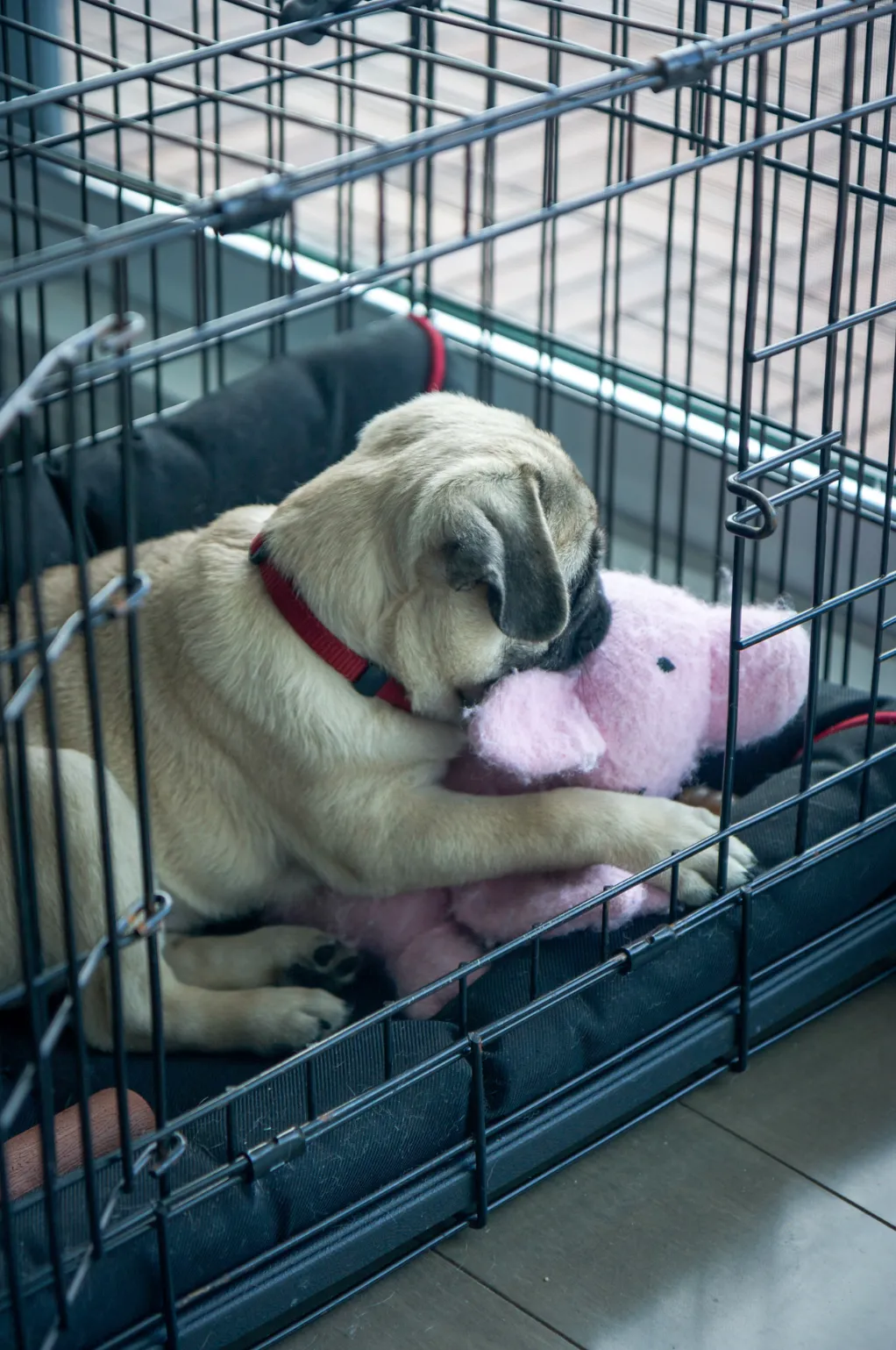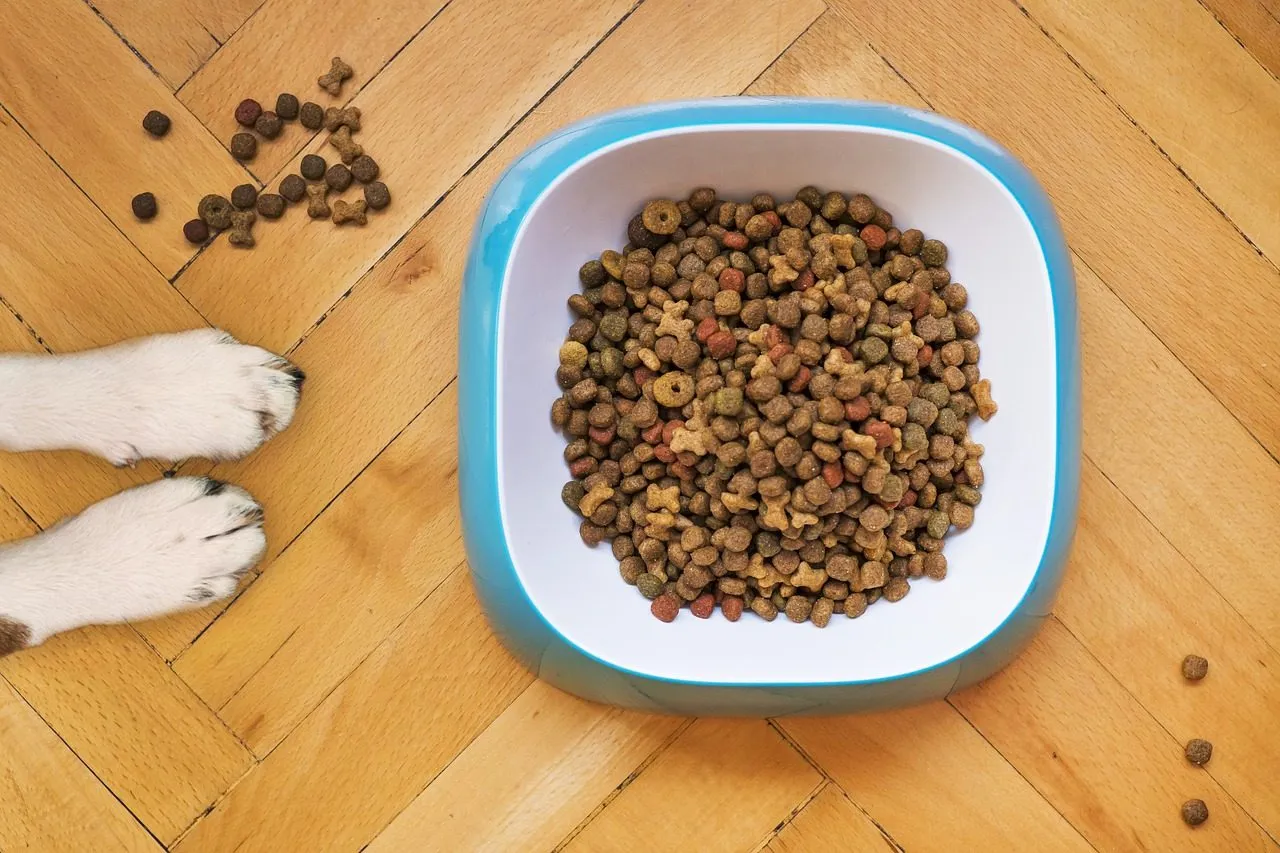Bringing a new puppy home is an exciting adventure, often accompanied by the challenging task of crate training. A common dilemma new puppy owners face is how to respond when their furry friend starts whining in the crate, especially during nap times or overnight. Is it a plea for attention, or a genuine need to go outside? This initial response sets the stage for responsible puppy care and highlights a common challenge new owners face. Ignoring a puppy’s cries prematurely can lead to negative associations or even accidents. Understanding the subtle cues is crucial for successful crate training and fostering a secure bond. This guide will help you differentiate between various types of puppy whines and establish effective routines. Knowing when to start potty training a puppy outside is an essential part of this process.
Distinguishing Nuisance Whining from Urgent Needs
The key to knowing When To Let Puppy Out Of Crate lies in understanding the timing and context of their whining. Before placing your puppy in the crate for a nap or for the night, always ensure they have had a recent opportunity to relieve themselves outside. If your puppy begins whining almost immediately after being settled with a distraction like a Kong toy, it’s often a sign of nuisance whining—a bid for attention rather than an urgent need.
Conversely, if your puppy has been quiet for 30 minutes or more, wakes up, and then starts to whine, it’s highly probable they genuinely need to go potty. In such cases, it’s ideal to wait for a few moments of quiet before letting them out. If your puppy is prone to accidents in the crate, even a brief pause in their crying should be enough. Take them directly outside for a potty break, and if they don’t go, immediately return them to the crate, ignoring any subsequent fussing. This teaches them that crying won’t lead to playtime, but quiet will grant them necessary relief.
Recognizing When Your Puppy is Truly Upset
While it’s important to avoid reinforcing nuisance whining, there’s a critical difference between a puppy seeking attention and one that is genuinely distressed. If your pup whines for over thirty minutes straight, with the intensity escalating rather than settling down, it signals a deeper problem. Ignoring prolonged, intense crying can lead to a negative association with the crate, making future training much harder and potentially instilling fear or anxiety in your puppy regarding their safe space.
In such scenarios, you may need to reassess and go back a few steps in your crate training. It’s never worth creating a negative experience with the crate. Sometimes, puppies may feel more secure in a setup where their crate is placed inside a larger puppy pen with the door open, allowing them a bit more space while still being contained. If a puppy breaks out of crate due to anxiety, it’s a clear sign of distress that needs immediate attention.
 A small light brown puppy rests peacefully inside a dog crate with its door open
A small light brown puppy rests peacefully inside a dog crate with its door open
Optimizing the Crate Environment for Your Puppy
The environment around the crate can significantly impact your puppy’s comfort. Many puppies do better if their crate is in the same room as you, providing them with a sense of security and companionship. However, some pups might get more agitated if they can see you but can’t reach you. For these puppies, placing the crate in a quiet room by themselves or covering it with a sheet to block visual distractions can be more effective. Remember, puppies aren’t born loving crates; it’s a learned behavior achieved through consistent positive experiences and minimizing negative ones.
Building a Positive Crate Association: Step-by-Step Training
Successful crate training hinges on conditioning your puppy to view their crate as a safe, comfortable, and positive place. This process should be gradual, ensuring your puppy is happy and relaxed at each stage before moving on. Start by simply allowing your puppy to explore the crate freely. Hide treats inside for them to discover randomly throughout the day. Engage in short training sessions where you toss treats just inside the crate door, gradually throwing them further back as your puppy becomes more comfortable entering. Always let them come out as they wish initially.
Once they happily enter and stay inside for longer periods with the door open, begin working on duration. Close the door for a brief moment, then immediately treat and open it. Gradually extend the time the door remains closed, always rewarding them with treats while inside. Feeding your puppy their meals inside the crate is an excellent way to build positive associations. Place their food bowl just inside the door, slowly moving it further back over several days until they are comfortable eating completely inside with the door closed. Let them out as soon as they finish eating. You can then gradually increase the time they stay in the crate after finishing their meal by dropping treats every few seconds, slowly building up duration. Remember, puppies often need to go to the bathroom shortly after eating. To further enhance positive feelings, reserve special treats, like bones or long-lasting chews, exclusively for crate time. Learning how to teach puppy to come and stay is another foundational command that can reinforce positive behaviors during training.
 A bowl of dry dog food sits on a floor
A bowl of dry dog food sits on a floor
When the Crate Isn’t the Only Solution: Extended Stays and Comfort
It’s crucial to understand that a crate is not designed for all-day confinement. Puppies are babies and should not be left in a crate for longer than a couple of hours at a time, especially when very young. For extended absences, consider alternative solutions. A puppy pen with potty pads inside and the crate with its door open can provide a secure yet more spacious environment. Another option is a puppy-proofed room, such as a utility room or bathroom, equipped with safe toys to keep them entertained.
To further aid comfort and reduce anxiety, consider using products like an Adaptil diffuser in the room or an Adaptil collar on your puppy. These products mimic mother dog pheromones, which can help puppies feel more secure and sleep more quietly, easing their adjustment to a new home and crate. Knowing how to make puppy stop jumping on me is also important for managing overall behavior and ensuring a well-mannered pet.
Responding to Your Puppy’s Distress: It’s Okay to Comfort
Puppies, like human babies, need to feel safe and secure. It is never wrong to comfort an upset puppy. You want your puppy to learn that you are there to help them when they genuinely need it. Consider it from your perspective: if your adult dog needed to go outside in the middle of the night to relieve themselves or was sick, you would want them to alert you, right? If you consistently ignore all efforts at communication, your puppy may learn that their signals are ineffective, potentially leading to them not warning you in crucial situations.
For instance, a dog afraid of thunder might whine and pace in their crate during a storm. In such a situation, letting them out to comfort them is absolutely appropriate. This act of empathy does not typically undermine their general crate training during calm times, as it teaches them that you respond to genuine distress. Similarly, understanding how to train a husky puppy to come requires patience and positive reinforcement, fostering trust that extends to all aspects of their training.
Puppies undergo significant adjustments when they move into a new home, away from their mother and littermates, often finding themselves alone in unfamiliar surroundings. Dogs are inherently social animals, and a crate is not a natural habitat. Building a positive association with the crate requires numerous positive interactions. If your puppy is truly struggling with any amount of crate time, it indicates a need for more foundational work in creating those positive connections.
Happy training and good luck with your new companion!
